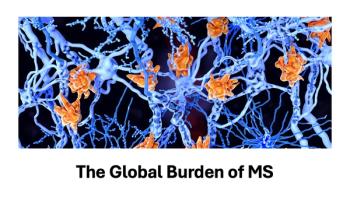
Survey Reveals Cancer Doctors Struggle to Keep Up as Treatments Advance Quickly
A new survey by Johnson & Johnson revealed that oncologists are overwhelmed by the rapid pace of innovation in cancer care, with many calling for better tools, education and collaboration to help integrate new treatments and technologies into everyday practice.
Cancer care is an ever-changing space in healthcare, and it’s only evolving faster and faster.
According to a new survey conducted by Johnson & Johnson,
The care index was created in collaboration with The Harris Poll to look at real-world challenges healthcare professionals face in delivering advanced care.
“Just last year, oncology treatments were approved in the U.S. for more than 50 indications, including 11 first-in-class therapeutics—a clear sign of the progress we’re making,” Biljana Naumovic, president of U.S. Oncology at Johnson & Johnson Innovative Medicine, told Managed Healthcare Executive. “But with progress comes complexity.”
Naumovic shared that while scientific breakthroughs are increasing, there is a growing divide between cancer innovation and implementation in clinical practice.
The index revealed that 73% of healthcare professionals said there’s a gap between the availability of innovative treatments and their integration into patient care.
“Community oncologists are doing remarkable, innovative work every day,” Naumovic said. “Our job is to support them in delivering the best care possible by removing barriers, expanding access, and making innovation more accessible.”
To bridge that gap, Johnson & Johnson launched several initiatives aimed at supporting providers outside of large academic centers.
According to a news release by Johnson & Johnson, these initiatives include Trials360.ai, an AI-powered tool that identifies and prioritizes clinical trial sites in underserved communities, and Make It HAPPen, a program supporting the growing role of Advanced Practice Providers (APPs).
The index also revealed that only 27% of surveyed clinicians said their practice offers a vast range of clinical trial options.
This finding is concerning, as 91% of respondents agreed that proximity to care is a key factor in patients’ treatment decisions.
Stephen “Fred” Divers, M.D., chief medical officer of the American Oncology Network, echoed these concerns based on his experience as a working cancer doctor.
“There’s no question the pace of innovation is accelerating—and that’s incredibly exciting,” Divers told MHE. “But it also means we need to be more deliberate than ever in how we apply new data, therapies and tools to patient care.”
Divers highlighted that community oncology practices operate with a mindset of “trust but verify,” always checking for the latest trials, biomarkers or updated guidelines that could improve care.
However, he added, the pace of change is pushing the limits of current infrastructure.
“Tools like the Oncology Care Index give us the big-picture view of where we need more support—whether that’s education, infrastructure, or peer collaboration,” he said.
One major focus for both Johnson & Johnson and clinicians, including Divers, is the role of artificial intelligence (AI).
While AI has the potential to reduce time to diagnosis by 20%, nearly half of respondents cited limited education as a barrier to implementation, the index found.
“AI has enormous potential, but how we implement it matters just as much as the technology itself,” said Divers. “At AON, for example, we’ve built a system that automatically updates NCCN guidelines in our EHR every night. That kind of integration reduces friction and improves care delivery.”
Naumovic also said that scaling AI solutions depends on making them work in the real world, not just in theory.
“We have to pair technology with training,” she said. “That’s how we make progress stick.”
Both leaders stressed the importance of collaboration between academic and community providers.
Based on data, nearly half of healthcare professionals surveyed expressed a desire for more opportunities to share knowledge across settings.
“When providers across academic and community environments share tools and resources, patients benefit regardless of geography,” said Naumovic.
Looking ahead, Johnson & Johnson shared plans to use the findings of the Oncology Care Index to drive continued discussions and policy support, including backing the Clinical Trial Modernization Act, a bipartisan bill aimed at making trials more accessible to underserved patients.
“We know these challenges won’t be solved overnight,” said Divers. “But having companies like Johnson & Johnson highlight these barriers is the first step toward finding meaningful solutions.”
Newsletter
Get the latest industry news, event updates, and more from Managed healthcare Executive.






















































